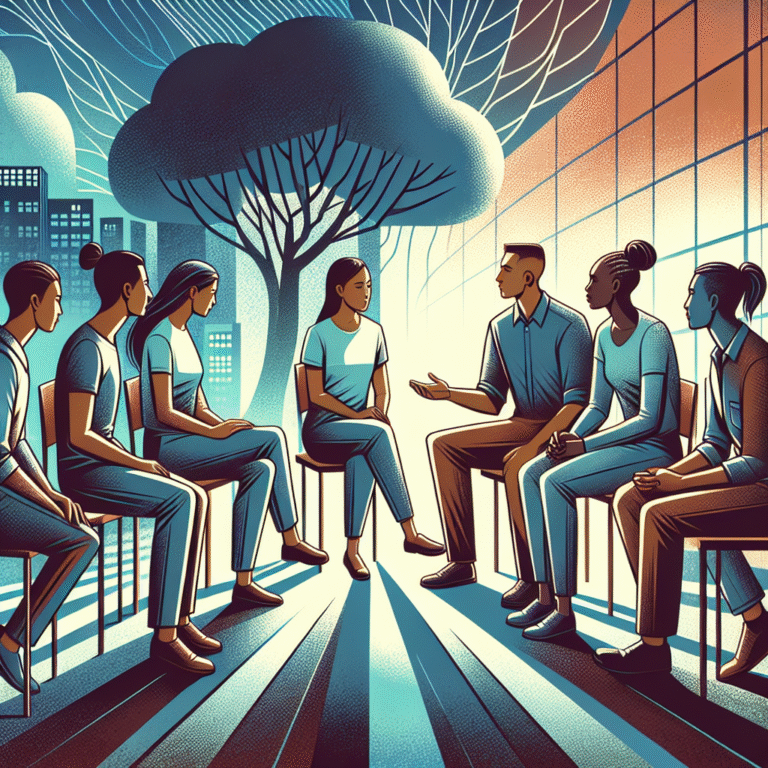
In today’s rapidly evolving job market, the call for inclusivity in hiring practices has never been more paramount. Organizations are acknowledging that diverse perspectives drive innovation and creativity. However, barriers to entry often prevent individuals from marginalized backgrounds from accessing opportunities. This article explores how competency evaluations can break down these barriers and create a more inclusive hiring environment.
Introduction: A Call for Change
Imagine a world where every individual, regardless of their background or education, can showcase their talents and skills. This vision is becoming increasingly achievable as organizations adopt competency evaluations—a method aimed at assessing potential rather than just past experiences. By focusing on what individuals can bring to the table, companies can effectively dismantle the longstanding barriers that have characterized traditional hiring processes. Breaking Down Barriers: How Competency Evaluations Encourage Inclusive Hiring isn’t merely a catchy phrase; it’s a transformative approach that promotes equality and diversity within the workforce.
Understanding Competency Evaluations
What Are Competency Evaluations?
Competency evaluations are structured assessments that measure an individual’s skills, knowledge, and behaviors related to a particular job role. Unlike conventional interviews that often rely on resumes or degrees, these evaluations focus on practical skills and real-world scenarios. They can take various forms, such as skill assessments, role-playing exercises, or situational judgment tests.
The Importance of Competency Evaluations in Hiring
Historically, hiring practices centered around standardized qualifications, which often biased against non-traditional applicants. Competency evaluations dismantle this framework by emphasizing job-related skills over educational pedigree alone. Organizations adopting this approach benefit from a more diverse candidate pool, which leads to a variety of skills, viewpoints, and experiences enriching their teams.
Breaking Down the Barriers
Identifying Common Barriers in Traditional Hiring
Traditional hiring methods often perpetuate barriers related to:
- Inequities in Education: Many talented individuals lack access to higher education due to economic or geographical barriers.
- Stereotypes: Unconscious biases can lead to stereotypes about certain demographic groups, skewing the hiring process.
- Narrow Focus: Employers often overlook candidates with non-linear career paths or those who have taken career breaks for caregiving or other responsibilities.
Case Study: Case Western Reserve University
Case Western Reserve University adopted a competency-based hiring framework, focusing on skills and experiences rather than academic qualifications. The result? A more diverse staff that better reflects the community it serves. This change not only enriched the academic environment but also fostered a more innovative and collaborative culture.
How Competency Evaluations Mitigate These Barriers
-
Equity in Assessment: Competency evaluations provide a level playing field where individuals are evaluated based on their potential and capabilities, not just their backgrounds.
-
Focus on Skills over Credentials: By prioritizing competencies, employers can discover hidden talents in candidates who may not have traditional qualifications.
- Reduction of Bias: Structured evaluations reduce reliance on personal impressions often influenced by bias, leading to a fairer assessment of all candidates.
Chart: Benefits of Competency Evaluations vs. Traditional Methods
| Aspect | Competency Evaluations | Traditional Hiring Methods |
|---|---|---|
| Focus | Skills and potential | Qualifications and experience |
| Candidate Pool | Diverse, varied backgrounds | Often homogeneous |
| Bias Reduction | Structured, objective assessments | Susceptible to unconscious bias |
| Retention and Performance | Improved team fit, higher engagement | Variable employee satisfaction |
Promoting Inclusion Through Competency Evaluations
Implementing Competency Assessments
-
Define Required Competencies: Clearly articulate the skills and behaviors necessary for the job roles, considering both hard and soft skills.
-
Utilize a Variety of Assessment Tools: Incorporate various evaluation styles, such as simulations, group activities, or case studies, to gauge competencies in real-world scenarios.
- Train Recruiters and Hiring Managers: Ensure those involved in the hiring process understand and utilize competency evaluations effectively, recognizing their importance in fostering inclusivity.
Case Study: Unilever’s Approach
Unilever has transformed its hiring process through competency-based methods. By removing the CV from the initial stages of recruitment and implementing gamified assessments, they’ve eliminated traditional biases. This innovative strategy has led to a remarkable increase in diversity within the company.
The Role of Technology
With the advent of technology, competency evaluations can be streamlined and scaled. AI-driven tools can assess skills objectively and provide data-backed insights into potential candidates. These tools can also aid in standardizing assessments to mitigate bias.
Table: Technology Tools Supporting Competency Evaluations
| Tool | Purpose |
|---|---|
| AI-Powered Assessments | Objective evaluation of skills |
| Video Interview Platforms | Standardized, remote competency checks |
| Skill-Building Simulations | Interactive assessments reflecting real-world scenarios |
Benefits to the Organization
Enhanced Innovation
A diverse workforce fosters creativity, as individuals bring unique perspectives and experiences. The influx of new ideas can lead to innovative solutions, giving companies a competitive edge.
Improved Retention Rates
When employees feel valued and included—thanks to inclusive hiring practices—they are more likely to remain with the organization. Increased job satisfaction translates to lower turnover rates and reduced recruitment costs.
Stronger Employer Brand
Being recognized as an inclusive employer enhances a company’s reputation. Potential candidates are often drawn to organizations that prioritize diversity, making it easier to attract top talent.
Conclusion: Moving Forward with Purpose
In today’s world, where inclusivity is not just a policy but a necessity, Breaking Down Barriers: How Competency Evaluations Encourage Inclusive Hiring becomes an essential mantra. By fostering an environment where every candidate is assessed based solely on their abilities and potential, organizations can cultivate diverse workplaces that thrive on varied perspectives.
As we move forward, let us remember that the journey towards equity in hiring begins with a single step—adopting competency evaluations is a promising stride in the right direction.
FAQs
1. What are the main advantages of competency evaluations over traditional hiring methods?
Competency evaluations prioritize skills and potential, reduce biases, and allow organizations to tap into a diverse talent pool.
2. How can small businesses implement competency evaluations?
Small businesses can define essential competencies for roles, use off-the-shelf assessment tools, and train hiring officials to recognize and evaluate these competencies.
3. Are competency evaluations equally effective across all industries?
Yes, competency evaluations can be tailored to suit various sectors by focusing on industry-specific skills and requirements, making them broadly applicable.
4. Can technology help in conducting competency evaluations?
Absolutely. Technology can standardize assessments, automate evaluations, and use data analytics to make informed hiring decisions.
5. What steps can organizations take to minimize unconscious bias in competency evaluations?
Organizations can use blind assessments, provide training on unconscious bias, and ensure diverse panels conduct evaluations.
As we engage with these compelling strategies, we hold the power to create workplaces where everyone has the opportunity to thrive. The commitment to inclusion begins now—let’s embrace the potential inherent in every candidate.













